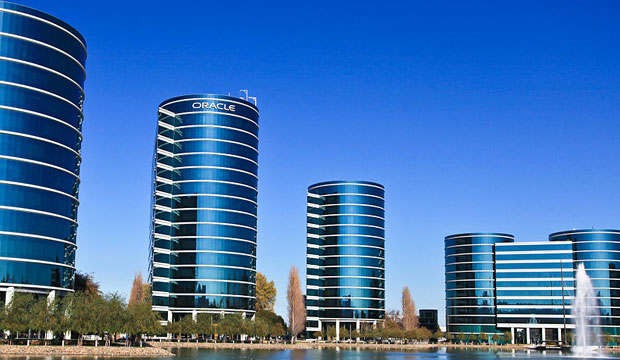If you’re one of the geniuses who advised selling Oracle shares ahead of this week’s earnings call, you might want to recheck your calculations. On your slide rule.
The headline on Oracle’s statement is all you need to begin the self-recriminations: “Q4 FY19 GAAP EPS UP 36% TO $1.07 and NON-GAAP EPS UP 23% TO $1.16.”
What were the naysayers thinking? More importantly, what were they thinking with?
I’m not going to quote every statistic, and there were bright and not-so-bright spots in the news, but the bottom line is there was more good than not — or as Co-CEO Safra Katz put it, “In Q4, our non-GAAP operating income grew 7 percent in constant currency — which drove EPS well above the high end of my guidance.”
Also, “Our high-margin Fusion and NetSuite cloud applications businesses are growing rapidly, while we downsize our low-margin legacy hardware business. The net result of this shift away from commodity hardware to cloud applications was a Q4 non-GAAP operating margin of 47 percent, the highest we’ve seen in five years,” she said.
On Target
What’s going on? Oracle is executing a pretty run-of-the-mill pivot of its business, if “run of the mill” is an appropriate phrase when you’re betting the farm. When the pivot started, Oracle had little more than ambition to reference. It had no cloud datacenters and the company with the most experience running the Oracle DB in the cloud was, um, Salesforce.
At that time, then-CEO Larry Ellison told anyone who would listen that the pivot would take about 10 years. That’s right, 10 years to move the majority of 400,000-plus customers and their data to cloud apps, and a new database built for the purpose complete with self-driving capabilities.
So, where are we?
New data in G2 Crowd’s “Enterprise Grid Report for Relational Databases/Spring 2019” shows that 17 percent of Oracle’s database is in the cloud, 83 percent on the ground. In other words, Oracle is about where Mr. Ellison might have predicted.
Of course, G2 Crowd also reported Oracle’s nemesis, Amazon Relational Database Service, at 100 percent cloud — but it indicates that the median number of users bought by Amazon customers is 37 vs. Oracle’s 1,750.
Even Amazon Aurora only clocks in at 175 users. In other words, the cloud DB competition is largely still in the sandbox. I’m not casting shadows at Amazon. Its Prime service is pretty good, and at least it hasn’t offered up a cryptocurrency yet.
Apps are a different story and there’s work to do there. “Satisfaction Ratings for CRM,” also a G2 Crowd report, ranks Salesforce with 84 percent likely to recommend and a Net Promoter Score of 41 against Siebel, with 66 percent likely to recommend and an NPS of -15, and Oracle Engagement Cloud with 74 percent and -8, and Oracle On Demand with 63 percent and -22.
A quick word on NPS: The scale runs from -100 to +100, so a zero is pretty good and 41 is awesome.
A full look at the G2 Crowd CRM report indicates that the larger and better established companies struggle with keeping their growing customer list happy, while the newer entrants like Salesflare, with 92 percent and an NPS of 78, and BPM’Online, with 98 percent and 79, have gaudy, almost unearthly numbers. G2 Crowd says averages are 79 percent and 31, so Salesforce’s 84 percent/41 is extra impressive.
My Two Bits
Oracle is a bellwether for the industry, so we’d rather see it doing well than not. That said, it’s also riding a secular change in tech: an aggressive movement to adopt commoditizing solutions like cloud, analytics and machine learning.
Oracle is on track in this regard, rather than a leading outlier. Nonetheless, other market leaders have stumbled during similar transitions, so it’s good to see Oracle’s numbers, especially in the current economic environment.
All this notwithstanding, economic storm clouds are on the horizon. A story in The New York Timespins at least some of the problems on the U.S. trade war.
Miscalculation beyond its control, in several dimensions, could upset Oracle’s applecart. Other warnings for a bumpy 2020 also have been making the rounds. It’s impossible to say how it all will turn out, of course, but if there’s a way to make the numbers, the team at ORCL seems capable.


























































Social Media
See all Social Media